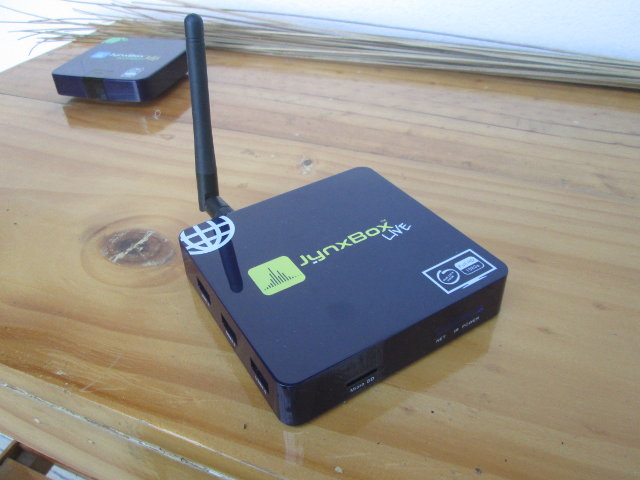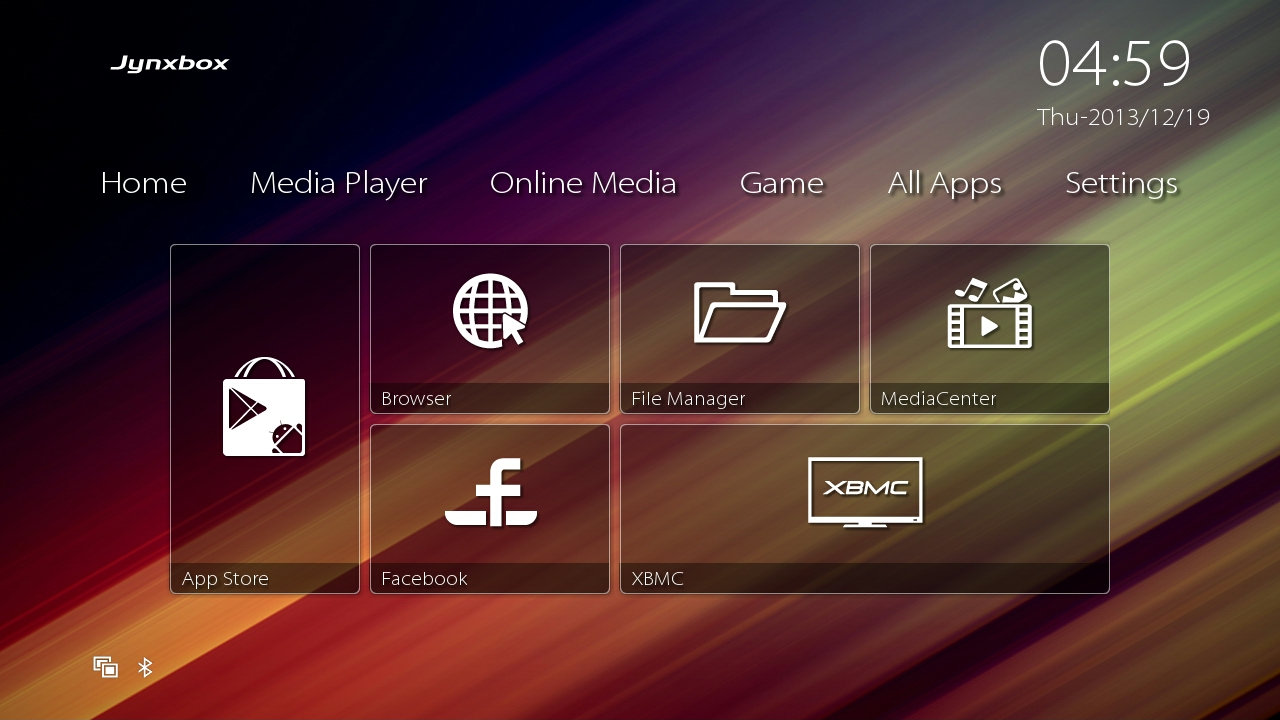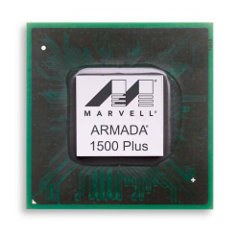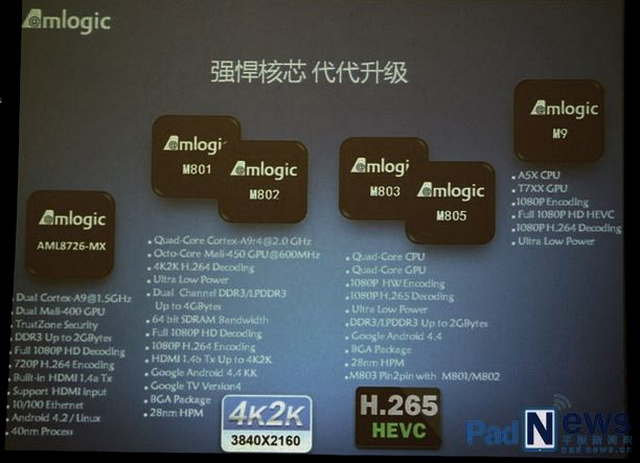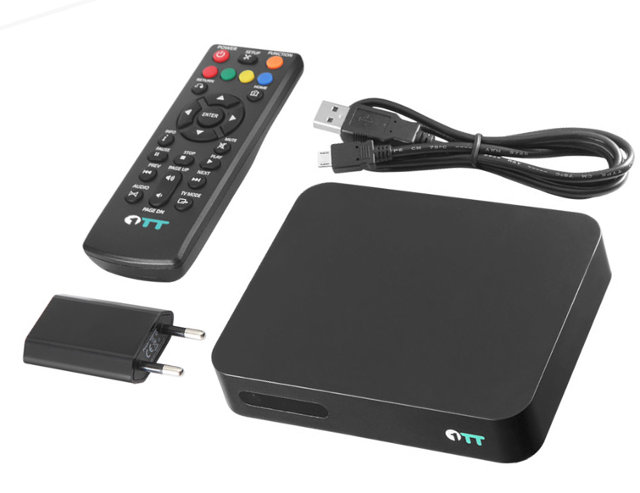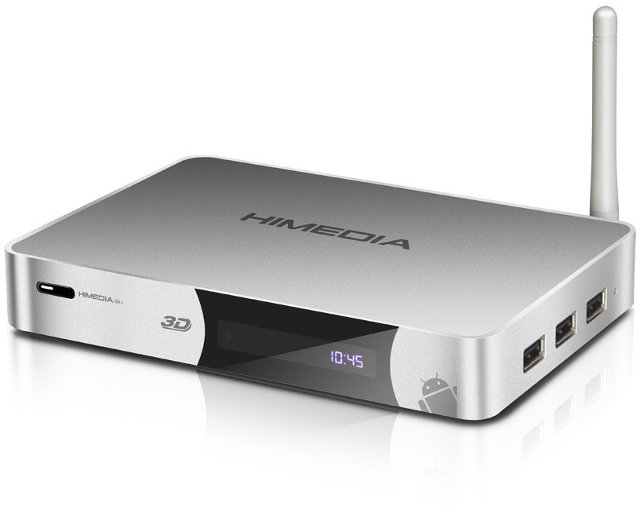A few days ago I showed some unboxing pictures and videos for Jynxbox Android M6 and Jynxbox Live, followed by Jynxbox Android M6 review, and today I’ll quickly review Jynxbox Live, an Android TV Box that based on Rockchip RK3066 (full specs available in unboxing post) that can stream over 200 live TV channels after install a Live TV app / crack, and happens to cost a “mere” $350 allegedly because it give access to these live TV channels. From the outside, Jynxbox Live looks very much like any other Android TV box, with HDMI, Ethernet, S/PDIF, three USB ports, a micro SD slot, a few LEDs, and a Wi-Fi antenna. To get started I’ve connected the provided HDMI cable to the box and my TV, as well as an Ethernet cable, before powering up the device with the USB power supply. After a few seconds wait, you’ll get the […]
Jynxbox M6 Android TV Box Review
I’ve shown some unboxing pictures and video of Jynxbox Android M6 earlier this week, and today I’ll write a review of this AMLogic AML8726-M6 dual core Android media player. I’ll start with my first impressions, go through the different settings, test video playback, wi-fi performance, and reports about different miscalleous tests: Bluetooth, USB mass storage, USB webcam, etc… First Boot, Settings and First Impressions First, you’ll need to insert the provided AAA batteries in to the remote control. Opening the remote is a bit tricker than I would like as the cover does not come off that easily. Before powering up the device, I’ve connected the provided HDMI cable between the device and my HDTV, and an Ethernet cable to my hub. The first Ethernet cable would not click with in the device RJ45 connector, although it works with my laptop and other devices, but using another one worked just fine. Connecting […]
Jynxbox Android M6 and Jynxbox Live Android TV Players Unboxing Pictures and Videos
I’ve just received two new devices from theatertvbox.tv, namely Jynxbox Android M6 and Jynxbox Live. Both are Android media player, with the former being a more traditional AMLogic AML8726-MX based Android TV Box with XBMC, and the later being an Internet media streamer based on Rockchip RK3066 that focuses on playing online content from services such as Hulu or Netflix. Today, I’ll start with listing specifications, and showing some unboxing pictures and videos for both players, and write a complete detailed review, at least for the M6, in a few days. Jynxbox Android M6 The device’s specifications are somewhat similar to other AML8627-MX boxes such as Matricom G-Box Midnight MX2 or Tronsmart Prometheus: SoC – AMLogic AML8726-MX dual core ARM Cortex A9 @ 1.5GHz with Mali-400MP2 GPU System Memory – 1GB RAM Storage – 4GB NAND flash + microSD/SDHC slot (up to 32GB) Video Output – HDMI 1.3 and CVBS […]
Marvell Unveils ARMADA 1500 Plus (88DE3108) SoC for Android and Linux Smart Video Platforms
Building on top of it ARMADA 1500 SoC for Google TV, Marvell has recently announced the ARMADA 1500 Plus (88DE3108) HD secure media processor SoCdesigned for smart video products based on Android 4.2.2, and Linux, such as media players, OTT boxes, hybrid set-top boxes and smart TVs. ARMADA 1500 Plus features two ARM Cortex A9 cores, Vivante GC1000 and GC300 GPUs, respectively for 3D and 2D graphics, and integrates an HDMI receiver and Gigabit Ethernet. Hisense will be among the first to use the platform with the upcoming H6 Smart TV and Pulse Pro set-top-box, but details have yet to be released for these two products. Here are the key features of 88DE3108 SoC: Processor – Dual core Cortex A9 with over 6000 Dhrystone MIPS Dedicated 3D and 2D graphics acceleration – dual threaded unified shader (Vivante GC1000 and GC300) with support for OpenGL ES 1.1/2.0 and DirectFB. Video vMeta […]
AMLogic Processor Roadmap: Quad core Cortex A9 (M8), and 64-bit ARM processors (M9)
We already knew AMLogic is about to release a quad core Cortex A9 SoC, previously codenamed AML8726-M8, but recently renamed to M80X family with 4 different SoCs, but the company has now officially announced the new M8 family, as well as M9 that will feature 64-bit ARM Cortex A5X cores with Mali T7XX GPU. Onda V975m, the first tablet based on M802 processor, was also part of the announcement. Price: 999 CNY (~$164). The new products line is divided as follows: M801/M802 Quad core Cortex A9r4 @ 2GHz with Octo-core Mali-450MP GPU @ 600MHz 4K2K video decoding, Full 1080p decoding (multi-codec), and 1080p H.264 encoding Dual channel DDR3/LPDDR3 up to 4GB 64-bit SDRAM bandwidth HDMI 1.4 up to 4K2K OS – Android 4.4 Kit Kat (Dec. 2013), Google TV version 4 BGA package, 28nm HPM M803/M805 Quad core CPU with Quad core GPU 1080p H.265 decoding, and 1080p HW encoding […]
Cloud Media 1OTT Internet Media Player Runs Linux on Cavium ARM11 SoC
Cloud Media is mostly known for their Linux based Pop Corn Hour media players. but recently they started offered a free media player called FreeOTT via ISPs or Facebook giveaways. This little box gives direct access to online video channels. I reviewed FreeOTT a few months ago, and found the interface to be sluggish (possibly because of my Internet connection), audio was not working on my TV. So overall not a very good experience from my side, but they’ve upgraded the firmware with features like Miracast, DLNA, and “iOSCast” (Airplay?), possible improving performance, and recently added CCTV 1 to 15, except CCTV 4, to the list of channels. FreeOTT was difficult to source since you can only get it for free, so the company has just launched 1OTT player based on what appears to be the same hardware platform, but with a larger enclosure. 1OTT Specifications: Media Processor – Cavium CELESTIAL […]
XBMC MX Linux v1.00 RC1 for AMLogic AML8726-MX Devices
Developer “croniccorey” has recently announced the release of MX Linux v1.00 RC1, an XBMC Linux image for media players based on AMLogic AML8726-MX, on XDA Developers’ Forums. This release supports G18REF and MX2REF devices (See build.prop in Android) such as Matricom G-Box Midnight MX2, and a test image has also been released for g02refDongle devices such as Droid Stick A2. Checking the MTD layout Before starting the installation, you may want to check your flash partitions in order to avoid bricking your device: Install and run Terminal Emulator Run the command below to make sure your partition table is compatible with the image:
|
1 2 3 4 5 6 7 8 9 10 11 |
[root@amlogic /]# cat /proc/mtd dev: size erasesize name mtd0: 00400000 00200000 "ubootenv" or "bootloader" mtd1: 00800000 00200000 "logo" mtd2: 00800000 00200000 "aml_logo" mtd3: 00800000 00200000 "recovery" mtd4: 00800000 00200000 "boot" mtd5: 40400000 00200000 "system" mtd6: 20000000 00200000 "cache" mtd7: 10000000 00200000 "backup" mtd8: 18c800000 00200000 "userdata" |
If your partition table is different, do not install the default image for MX2REF / G18REF. However, If you’ve got Matricom Android firmware version 1.1.6 or greater or WJB’s Linux builds from November 21 2013 onwards, the MTD layout will be different, and you’ll need to […]
HiMedia Q5II Android STB Features HiSilicon Dual Core SoC, a 2.5″ SATA HDD Bay, and Supports XBMC Hardware Decode
Many Android set-top boxes are based on application processors mainly targetting tablets such as Rockchip RK3188, and media capabilities including video quality, and audio pass-through are not always optimal, or not working at all. On the contrary, HiMedia Q5II, an Android 4.2 media player, is powered by HiSilicon 3718 (or is it Hislicon 3716C V200?), a dual core Cortex A9 SoC designed specifically for media players. It also features an external SATA slot, HDMI and composite video output, optical and coaxial S/PDIF, and I’ve just found out the company worked on making video hardware decoding work with XBMC. HiMedia Q5II specifications: SoC – HiSilicon Hi3716C V200 dual core ARM Cortex A9 @ 1.6GHz + ARM Mali-400MP4 GPU. N.B.: HiMedia indicates the processor is Hi3718, but most resellers give specifications with a dual core processor called 3716C… Hi3718 is not listed at all in HiSilicon website, and Hi3716C is a single […]


